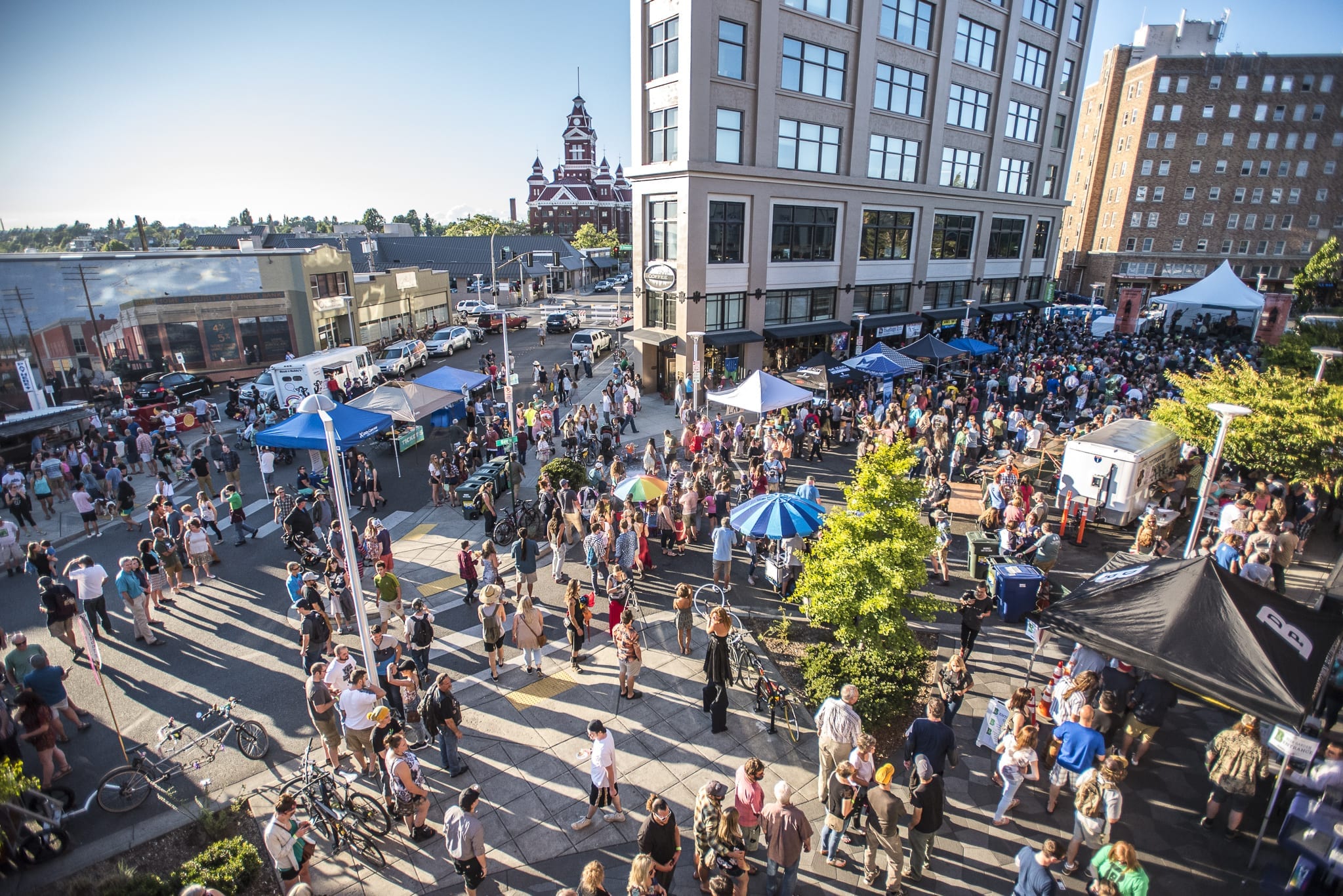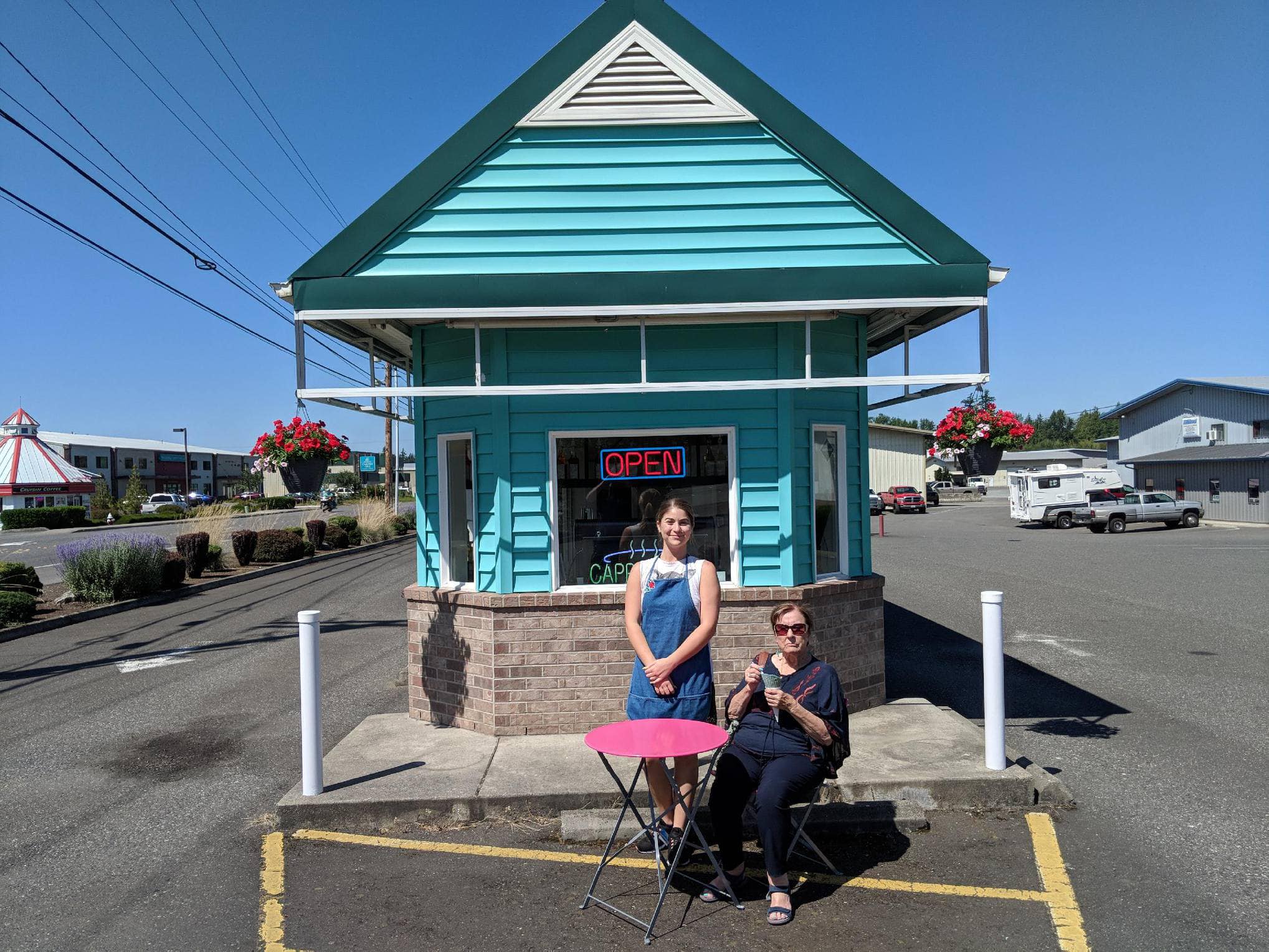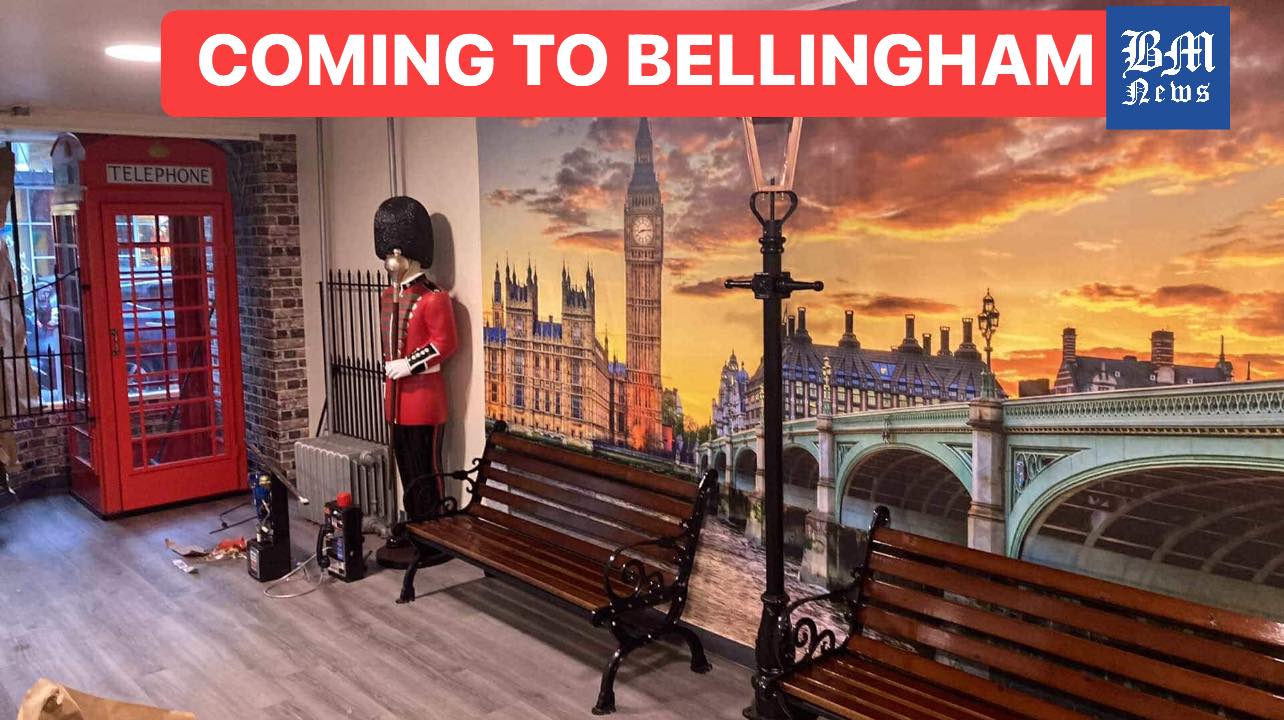By Fernando Gonzalez
BELLINGHAM, WASHINGTON – Located between the rugged beauty of the Cascade Mountains and the blue waters of Puget Sound, Bellingham has long been recognized for its scenic allure. Today, its role as a growing metropolitan area (Metro) sets it apart, establishing its importance in the Pacific Northwest. Despite its modest size compared to urban giants like nearby Seattle or Vancouver, Bellingham has carved out a distinct identity as a regional hub, underpinned by several key attributes.
Population and Urban Center
Bellingham serves as the primary urban center for Whatcom County, boasting a city population of an estimated 97,000 as of 2024 According to the City of Bellingham per the Washington State Office of Financial Management. The Bellingham Metropolitan Statistical Area (MSA) extends beyond the city limits to include neighboring communities like Ferndale, Lynden, and Blaine, Everson, forming a cohesive urban region. The MSA’s population reached an estimated 231,919 in 2023, showcasing Bellingham’s pivotal role in the regional demographic landscape.
Economic Engine for Whatcom County
Economically, Bellingham is a powerhouse. Western Washington University anchors its educational sector, complemented by a growing healthcare industry, thriving manufacturing, diverse retail options both in its Downtown, Northside and even southside districts, and a vibrant tourism scene with natural attractions such as the Bellingham Boardwalk, Whatcom Falls, etc. Its strategic position near the Canadian border, between Seattle and Vancouver, has positioned Bellingham as a focal point for cross-border trade, logistics, and international commerce.
Transportation: The Veins of a Metropolis
Bellingham’s connectivity highlights its metropolitan status. The Bellingham International Airport (BLI) offers both national and international flights, while Interstate 5 (I-5) provides a direct arterial route linking the city to Seattle and Vancouver. Additionally, the Port of Bellingham’s facilities for shipping, commercial fishing, ferry operations and recreational boating solidify the city’s place within regional transportation networks.
The Metro area also has very reliable transportation agency, the WTA (Whatcom Transportation Authority), tasked with operated Busus accross Metro Bellingham and even operating rides into the Skagit area.
Cultural and Educational Influence
Culturally, Bellingham thrives. It is home to Western Washington University and other institutions like Whatcom Community College, making it a place for education. The city’s rich cultural offerings include an array of annual festivals, a thriving arts scene, and numerous music and theater venues including the world famous Mount Baker Theatre, which is known for attracting top talent over the years including comedians like Gabrial Iglesias and actors like Rainn Wilson. These attractions not only entertain residents but also draw visitors, enhancing Bellingham’s metropolitan character.
Media and Information Hub
Bellingham’s media landscape includes local newspapers such as The Bellingham Herald, Cascadia Daily News, radio stations such as KGMI, and digital news outlets and platforms such as Bellingham Metro News, MyBellinghamNow, Whatcom News, Salish Current. These outlets serve as centralized sources of information, a hallmark of any significant metro area. Their presence highlights the city’s role in shaping public discourse and fostering community engagement.
Across the Metro, other media outlets include Lynden Tribune, Ferndale Record, The Northern Light, Public Safety Matters, The Front, Whatcom Watch, Whatcom Breaking News, and The Fourth Corner.
Robust Urban Infrastructure
Bellingham’s infrastructure supports its metropolitan claims. Public transit, led by the Whatcom Transportation Authority (WTA), connects the community effectively. Advanced medical facilities, including PeaceHealth St. Joseph Medical Center, public healthcare, though the people of Bellingham are now wanting more medical options as Metro Bellingham continues to grow. The city also offers a suite of government services, courts, and community centers, alongside a robust commercial landscape featuring diverse retail and dining options that attract visitors from surrounding areas.
Some of these dining options include National Chains such as Texas Roadhouse, Chipotle, Buffalo Wild Wings, the basics such as McDonald’s, Burger King, DQ, Taco Bells, etc, Many Steakhouses, Diners, a Chick-fil-A coming soon etc
It offers hundreds of local establishments of different backgrounds such as as American, Mexican, Indian, Greek, Italian, English, etc.
Its two most famous local Burger restaraunts are Boomer Drive-In Located on Samish Way, and Doug’s Burgers located on Meridian Street in the Fountain District of Bellingham.
The City of Bellingham has brewerys everywhere too…
Regional Influence and Community Ties
Bellingham’s influence extends beyond city or county lines. Its cultural, educational, and economic impacts resonate in parts of Skagit County and even into British Columbia, Canada. This cross-regional interaction defines Bellingham as a central node in a larger network of communities.
Metro Status and Statistical Overview
Bellingham is officially recognized as the 204th largest Metropolitan Statistical Area in the United States, with a growth rate of 2.24% from 2020 to 2023. This classification by the U.S. Census Bureau acknowledges the area’s high population density at its core and the economic interdependencies binding the region together. Notably, Bellingham’s MSA growth rate outpaces others such as Hilton Head Island–Bluffton–Port Royal, SC (232,523) and Yakima, WA (256,643).
How Las Vegas Became a Metro Area
The Las Vegas area officially became a Metropolitan Area in 1970 when its population reached 276,079 across Clark County. This milestone marked the beginning of its transformation into one of the most iconic metropolitan regions in the United States. The classification reflected the area’s rapid growth, fueled by the rise of the casino and tourism industries, along with significant investments in infrastructure and urban development. Today, Las Vegas serves as a benchmark for how mid-sized cities such as Bellingham can evolve into major metropolitan hubs.
Future of the City of Bellingham and Its Metro Area Population
The future of Bellingham and its metropolitan area population is slated for growth and evolution. With its strategic location between Seattle and Vancouver, combined with its economic and cultural assets, Bellingham is expected to attract more residents and businesses in the coming decades.
City of Bellingham Population:
- Current Estimated Population: 97,270 as of April 1, 2024, per the Washington State Office of Financial Management.
- Population, Census, April 1, 2020: 91,482.
Bellingham Metro Area Population:
- 2023: 231,919
- 2020: 226,847
Projections suggest that Bellingham’s metro population could surpass 250,000 by 2030, driven by ongoing investments in infrastructure, housing developments, and economic diversification. The city’s emphasis on sustainable urban planning and environmental stewardship will likely play a pivotal role in accommodating this growth while preserving its natural beauty.
Efforts to expand public transportation, enhance educational institutions like Western Washington University, and bolster healthcare services will ensure that Bellingham remains a desirable place to live, work, and visit. Additionally, the city’s proximity to international markets and cross-border trade opportunities positions it as a critical player in the Pacific Northwest region.
This anticipated growth will bring both opportunities and challenges, requiring careful planning and collaboration among city officials, local businesses, and residents to maintain the balance between progress and preservation.
Crime and Social Challenges
As Bellingham continues to grow, it faces challenges common to expanding metro areas. Organized crime, petty theft, property crime, and homelessness have become increasingly visible. Homeless encampments are popping up across the city, often re-emerging in new locations after being cleared. For example, after the WinCo encampment was shut down, many individuals relocated to an area near Walmart, and later to the Bakerview and Northwest camp, which is slated for clearing later this month where its population is expected to relocate closer to the airport at Bakerview and Maplewood.
Social media has amplified these issues, with Facebook pages like “The Shit-Show” documenting rampant theft in Bellingham. The page’s creator frequently posts videos of confronting alleged thieves and retrieving stolen merchandise. This grassroots effort has gained significant traction, amassing nearly 100,000 followers and an estimated 100 million views, shining a light on the city’s growing struggles with crime as its City and Metro Population explodes.
The Bellingham Metropolitan Area (MSA)
The Bellingham Metropolitan Statistical Area (MSA) encompasses all of Whatcom County, Washington, including a diverse mix of cities, towns, and unincorporated communities. This region blends urban, suburban, and rural landscapes, with each area contributing to the overall character and economy of the metro. Alger, though not officially designated as part of the metro area, aligns closely with Bellingham due to its geographical proximity and community connections.
Cities and Towns:
- Bellingham: As the largest city and the economic and cultural hub of the metro area, Bellingham stands at the heart of Whatcom County, offering a vibrant arts scene, a thriving downtown, and a major regional university.
- Ferndale: Located northwest of Bellingham, Ferndale is a growing suburban city known for its family-friendly environment and small-town charm. It’s becoming increasingly popular as new developments attract residents.
- Lynden: A Dutch-inspired town near the Canadian border, Lynden has a strong agricultural presence. The town hosts festivals and maintains a close-knit community atmosphere, with agriculture playing a central role in its economy. It is also the host of the Annual County Fair, and attracts top musicians such as Flo Rida, Nelly, NeYo, 38Special, Chace Rice, etc.
- Blaine: Known for its proximity to the Peace Arch border crossing, Blaine is a border town with strong ties to both U.S. and Canadian culture. It is an important trade gateway and a key location for cross-border commerce.
- Everson: A small town with a rural feel, located in the Nooksack Valley, Everson offers a peaceful, family-oriented environment with a focus on farming and outdoor activities.
- Nooksack: Neighboring Everson, Nooksack provides a quiet, residential environment, appealing to those who seek a slower pace of life, surrounded by scenic agricultural land.
- Sumas: A border town that benefits from its proximity to Canada, Sumas plays a key role in regional trade and travel, and it is closely connected to the Canadian market.
Unincorporated Areas and Communities:
- Sudden Valley (now part of City of Bellingham): A large residential area southeast of Bellingham, near Lake Whatcom, Sudden Valley offers a suburban feel with easy access to nature and recreational activities.
- Birch Bay: A coastal community known for its picturesque bay and popular with tourists, Birch Bay is a seasonal destination with many vacation homes and an easygoing atmosphere.
- Point Roberts: A unique exclave of the U.S., Point Roberts is accessible only through Canada or by sea, making it an isolated yet charming location with a distinct cultural and logistical connection to its neighboring country.
- Deming: Situated near the foothills of the Cascade Mountains and close to Mount Baker, Deming is a rural area known for its natural beauty and proximity to outdoor recreation.
- Acme, Glacier, and Maple Falls: These small, picturesque communities lie in the eastern part of Whatcom County, near the Mount Baker recreational area. They offer a serene, rustic lifestyle amidst the mountains and forests.
Alger’s Role in the Bellingham Metro Area:
Although Alger is not an officially incorporated part of the Bellingham MSA, it shares many characteristics and connections with the surrounding communities, particularly Bellingham. Situated along Interstate 5 and near key transportation corridors, Alger is influenced by the urban growth of Bellingham while maintaining a more rural and residential character.
Key Features of Alger’s Alignment with the Metro Area:
- Proximity to Bellingham: Alger lies just to the south of Bellingham, making it a part of the greater Bellingham area’s economic and social orbit. Residents often commute to Bellingham for work, education, and amenities, reinforcing Alger’s role as part of the larger metro area.
- Transportation: Interstate 5 runs directly through Alger, linking it to Bellingham and other metro area communities, facilitating easy access to jobs, services, and recreation in Bellingham.
- Rural Suburban Character: Alger is known for its rural residential setting, offering a quieter lifestyle compared to the urban core of Bellingham. This makes it an appealing option for those seeking a balance between access to metropolitan amenities and a more peaceful environment.
- Community Connections: As part of the broader Whatcom County community, Alger benefits from regional services and shares many common interests and opportunities with nearby towns and cities within the Bellingham metro area.
Key Features of the Metro Area:
- The metro includes a blend of rural, suburban, and urban environments, with a variety of residential neighborhoods, agricultural land, and natural attractions, providing a diverse living experience.
- Interstate 5 is the primary transportation corridor that connects many of these communities, ensuring easy access throughout Whatcom County and beyond.
- The Bellingham metro area is defined by interconnected communities, shared economic ties, and regional services, making it a cohesive and vibrant metropolitan region, offering opportunities for growth and development across all sectors.
With a strong sense of community, a wide range of amenities, and easy access to nature and commerce, the Bellingham MSA continues to thrive as a key region in the Pacific Northwest.
Millworks Phase 2: A New Landmark on Bellingham’s Waterfront
BELLINGHAM, Wash. — The design renderings for Millworks Phase 2, a seven-story mixed-use building at 110 W. Laurel Street on Bellingham’s waterfront, were unveiled this week. This project marks a significant step in the waterfront district’s revitalization and Bellingham’s evolving skyline.
The development will feature residential, commercial, and public-use spaces, including:
- A third-floor terrace offering views and future pedestrian bridge connections.
- A public plaza with dining and gathering spaces at street level.
- Enhanced pedestrian pathways connecting the building to surrounding areas.
The building’s design also addresses noise mitigation due to its proximity to railroad tracks, incorporating sound-dampening materials and strategic placement of commercial spaces.
Millworks Phase 2 is part of a growing trend of tall infrastructure projects across Bellingham, signaling a shift in the city’s architectural landscape. These developments reflect the city’s commitment to modernization while preserving its unique character.
Stay tuned for updates on this exciting development.
Conclusion
While Bellingham might not boast the skyscrapers of Seattle or the cultural renown of Vancouver, its multifaceted role as an economic, educational, and cultural hub solidifies its standing as a true metropolitan area. Its steady growth and development continue to transform what was once a small city into a vibrant, influential region poised for further expansion in the years to come.
Discover more from Bellingham Metro News
Subscribe to get the latest posts sent to your email.





